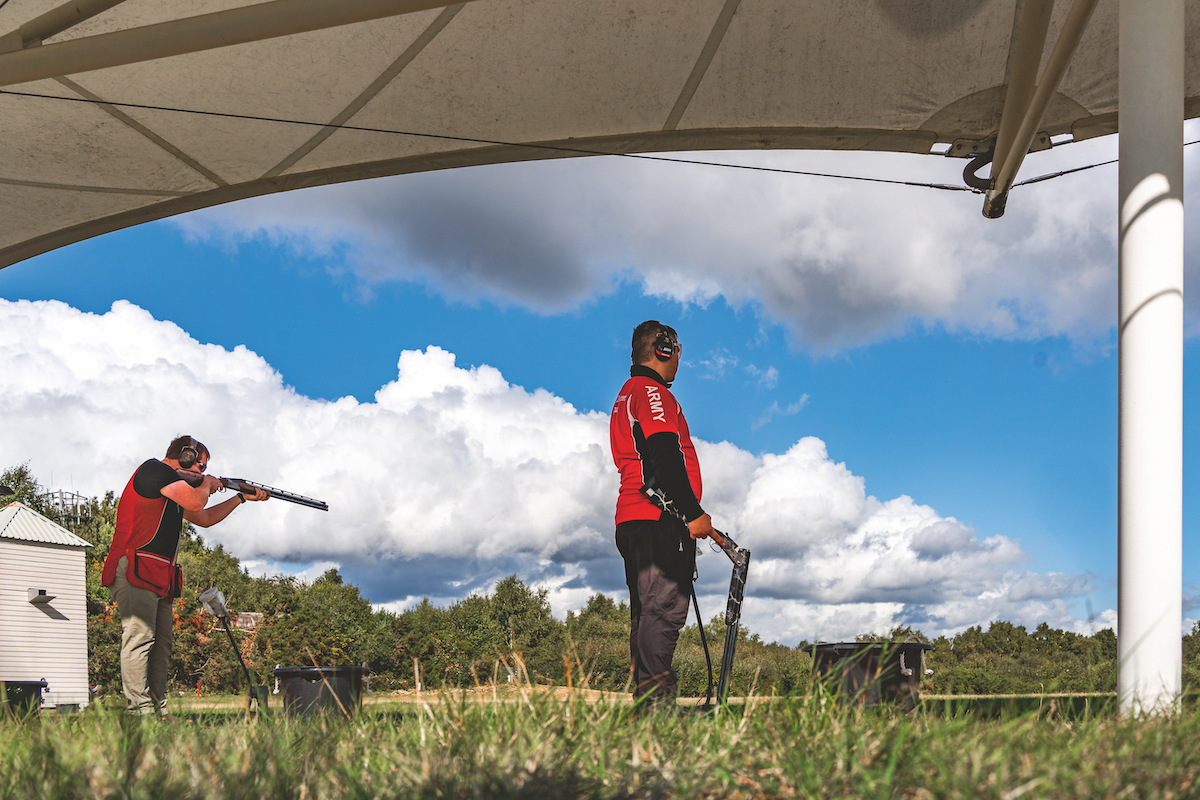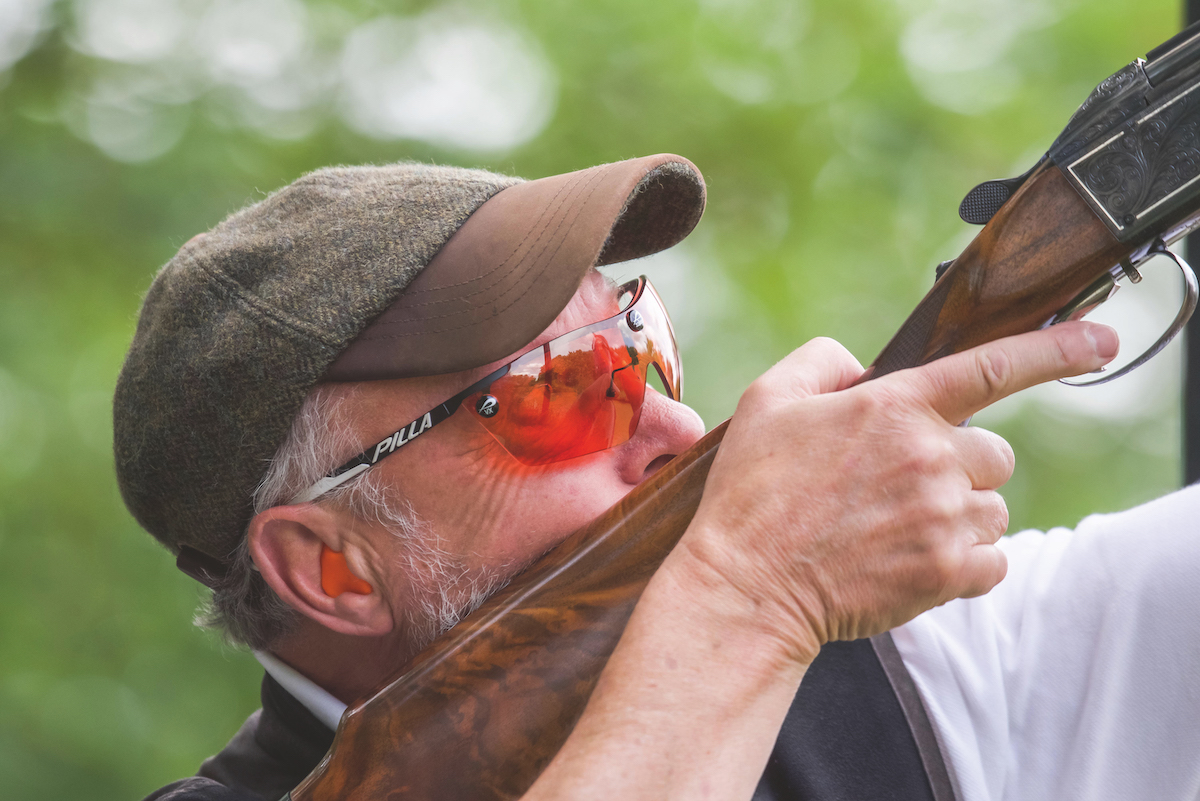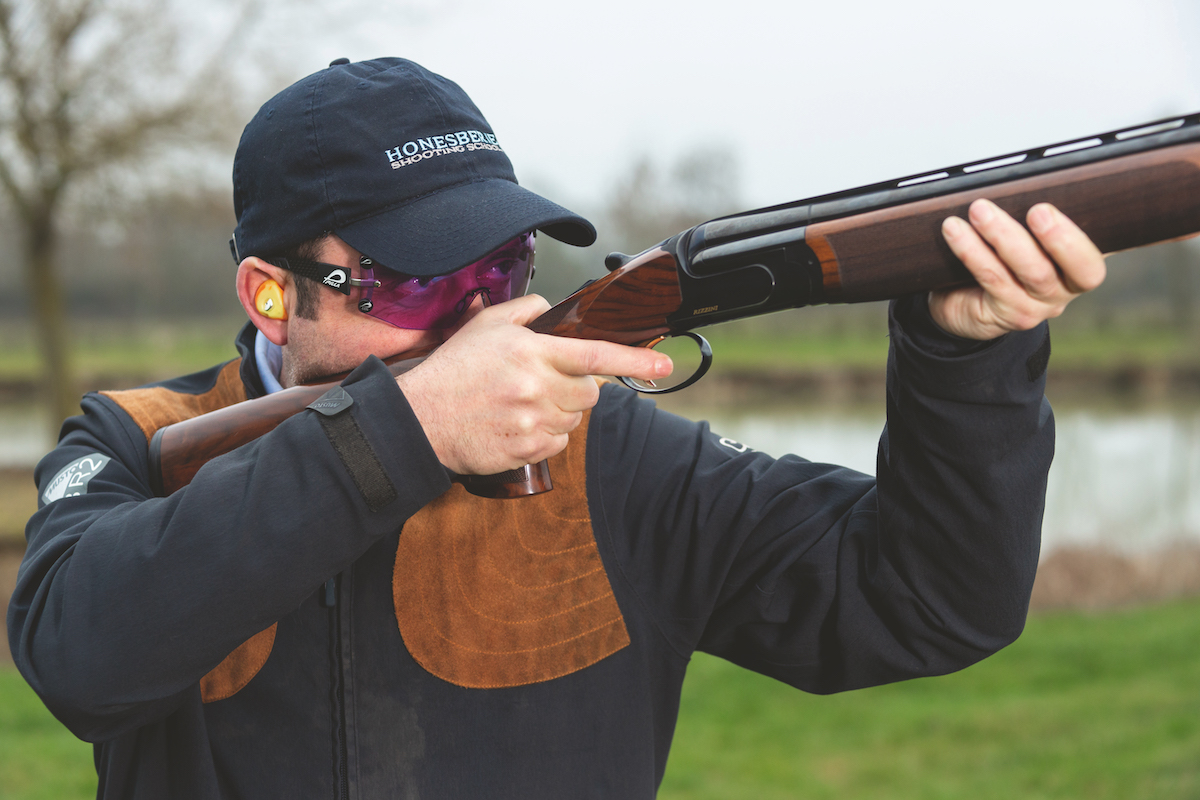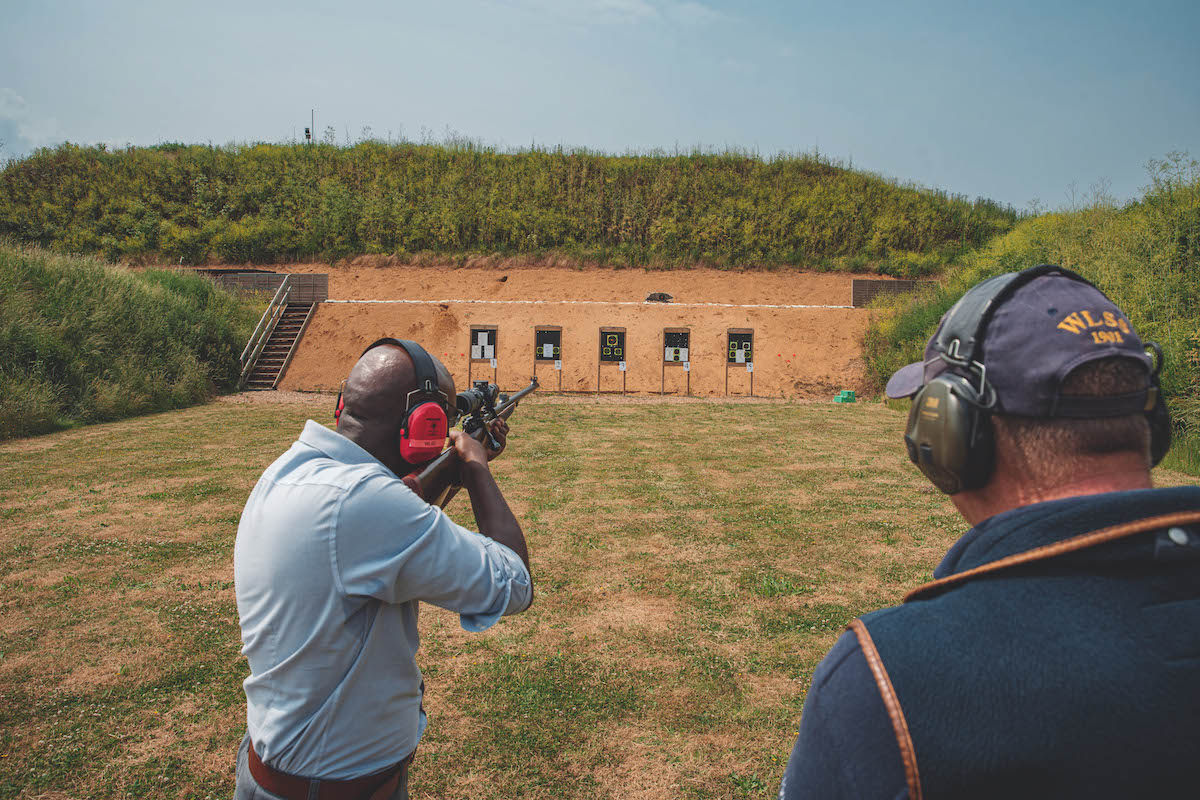Routinely successful
Want to be cool, calm and collected on the stand? Be devastatingly accurate? Then develop a pre-shot routine, psychologist Jess Thom tells James Simon

As one shooter takes his shot, the next is going through his routine
We’ve all seen them. Competitors who seem to be able to reach a state of almost other-worldly serenity before taking a shot. They’re calm yet completely focused on the task at hand. Undistracted by the chit-chat of their fellow Shots, unperturbed by the sound of other guns going off around them and seemly unconcerned by the pressure of competition. Just totally in the moment, completely absorbed by the now.
The method these Shots use to obtain this harmonious state is called a pre-shot routine. They’ll quite literally be taking themselves through a consistent, pre-determined set of actions – a routine – before every shot. It you look carefully you may be able to observe some of the steps but others are so subtle they are impossible to detect. So, what exactly is a pre-shot routine and should we all embrace one?

A good routine helps you focus on things that will affect performance
Accessible for all
Psychologist Jess Thom helps athletes on the British Shooting pathways develop and perfect their routines. “Every athlete at this level will use a pre-shot routine, often hand-in- hand with other routines. But it’s not just for athletes, club Shots can also benefit tremendously from having a proper routine to follow before every shot.”
The purpose of a pre-shot routine is quite simple; it’s designed to enable the Shot to put in a first-rate performance. But dive in a little deeper, and the water can muddy quite quickly. The pre-shot routine used by athletes is often confused with other routines, and in some cases even superstitious beliefs.
“We’re trying to get an individual to a place where they are psychologically and physically ready to perform at their best,” says Jess. “The pre-shot routine, which is the one we are concerned with here, comes immediately before the shot. There are pre-round routines and pre-competition routines, too but the pre-shot routine is the most significant and the one you should master first.”

In step three you focus on your eye hold point
The cynics among you will be pleased to learn that all of these pre-performance routines, or PPRs, are rooted in psychology rather than superstition or luck.
“Athletes can become quite superstitious,” agrees Jess. “On the morning of a competition they may choose to put their left sock on before their right sock, or park in a certain parking bay at the ground. The problem with these behaviours is that they are not always within your control. The reality is, parking in your favourite spot is unlikely to have a measurable benefit on your shooting, but the anxiety you feel on discovering that somebody else has taken that bay may have a negative impact on your state of mind.
“A proper routine makes you focus on things that are going to impact your performance, things within your control. It’s a physical and psychological process that you go through prior to taking a shot.”
A pre-shot routine works on a number of different levels. It directs your attention so that your focus is in the right place at the right time, and it helps you to access the automatic part of the brain.
“When you’re shooting,” explains Jess, “the target will be moving faster than you can think. So, in order to hit it you have to react automatically when you see it racing across the sky. In lay terms, a pre-shot routine helps you to access the automatic part of your brain, the part that’s going to react quickly enough to enable you to hit a fast target. In addition, it gives you confidence. Having a routine that works will build belief in a process that, when followed, will more often than not end in a kill. Get it right and you stand to benefit from a self perpetuating circle of positivity.”

Evaluation immediately after the shot is part of the routine
A well-developed routine enables us to reach a mental mode that shares many characteristics of, and is related to, flow state. That feeling of being in the zone that so many of us have experienced, albeit fleetingly, when life seems to move with complete ease.
“A pre-shot routine should take you to a place where you’re not overthinking what you’re doing,” says Jess. “You’re just allowing the process to flow, so you don’t have to think at the speed that you need to move your body and gun in order to hit the target.”
Step-by-step
As humans, we’re similar enough for the rudimentary principles of a pre-shot routine to apply to us all. But we’re also individual enough to require those principles to be applied slightly differently. The fact is, for a routine to be successful, it needs to be developed on a case-by-case basis. What works for you may not work for someone else.
“It was in the late 1980s that psychologists began to research pre-performance routines across many sports but particularly tennis and golf,” says Jess. “One of those pioneers was Robert Singer, who devised a five step approach that we still use as basis for developing pre-shot routines today. Let’s explore it through a clay shooting lens.”
Readying
Physically, you’re getting your body into the right position. It might be that you sort your feet out, your balance and so on. Psychologically you’ll be starting to notice what’s going on with your thoughts and feelings. You’ll notice where your attention is before bringing that attention back to yourself by, for example, focusing on a steady breathing pattern.
Imaging
This is where we visualise ourselves executing what we want to achieve. So, seeing yourself making that solid hit. When we visualise scenarios, our brain can’t tell the difference between us physically doing a skill and just imagining the process. The same neural pathways and the same connections to your muscle movements get fired. Think of it as warming up those mental and physical pathways.
Focusing
Now you’re getting ready to execute the shot, so your attention needs to shift from the internal to external. Up until now you’ve been focusing on yourself but now you may choose to look at your eye hold point. Just bring attention to that external point of view and you’re ready.
Executing
Taking the shot. Robert Singer talks about cultivating a quiet mind in this step, but in shooting we rarely have time to change what we’re thinking and quieten down the mind. Instead, work on accepting where the mind is and on focusing your attention to that external point from step four. Take the shot.
Evaluating
We’re now post-shot rather than pre-shot, but it’s still part of the sequence because it links this routine with your next shot. Overthinking an evaluation is not helpful, particularly if you missed. So, acknowledge what happened and remind yourself of what you need to do in order to hit the next one. Shooting is not complicated but we make it complicated by overthinking it. Remember, the previous shot has no bearing on the next.
This entire process isn’t rushed, but it really doesn’t take long. Some disciplines put more time pressure on competitors than others but this can be a blessing because it gives us less time to overthink.
Jess stresses that the routine should remain consistent from one shot to the next, but the process may need tweaking over time. It takes work, particularly at the start.
“Novices may find recalling the steps in the heat of a competition or lesson challenging,” says Jess. “So practise them again and again when the pressure’s off. It is quite a lot to remember, so you may find yourself overthinking at first, which is the opposite of what we are trying to achieve. After a possible dip in performance you will quickly start to realise the benefits. Some people really struggle with the imaging step, so if that doesn’t sit well then just omit it.”
Getting to grips with pre-performance routines on your own can be a bit like teaching yourself to ski in a white-out. It’s all too easy to lose your orientation and end up sliding down a slippery slope of confusion.
Do yourself a favour and find a Health and Care Professions Council (HCPC) or British Psychological Society (BPS) registered chartered sports psychologist like Jess to help you formulate a tailor-made routine.
Routinely useful
JESS THOM HCPC
Twitter: @jessthomsp
PAUL HUGHES HCPC
Paul runs occasional PPR courses, promoted via his Instagram account
@sportshootingpsychologist
 Georgina’s pre-shot routine
Georgina’s pre-shot routine
Georgina Roberts, an Olympic Trap shooter representing Great Britain and Wales and owner of the Chelsea Bun Club, which supports women in shooting, takes you through her six-step pre-shot routine. It is influenced by Robert Singer’s original routine but has evolved to suit Georgina.
I use my pre-shot routine to get rid of any negative thoughts and to talk myself through what I’m doing. It’s also an opportunity to refocus. A round of Olympic Trap lasts about 25 minutes, so it’s impossible to stay 100% focused for that amount of time. My pre-shot routine ensures I’m mentally switched back on, focused and my head is in the game.
STEP 1: There will be six people shooting an Olympic Trap round. I’ll wait for the person in front of me to move before stepping on the peg and checking that my feet are in the right place. I make sure I have my cartridges in and I rest my barrel on the mat just in between my feet.
STEP 2: I’ll establish where my gun hold and eye hold points are going to be. As my eyes begin to settle on the eye hold point, I’ll start going through my mental routine.
STEP 3: I’ll follow a breathing technique that’s slow and controlled and talk to myself to enforce positive behaviour. I use the phrase ‘just drop the rope’, which is borrowed from acceptance and commitment therapy. Imagine the negative thoughts that trouble you remain because you are pulling them on a rope. Let your mind drop the rope and they disappear. I visualise a flash target exploding – a big pink puff of smoke.
STEP 4: It is almost time to shoot. Now I will be talking myself through what I’m about to do and focusing on the part where attention is most needed. Currently, I am working on where I need to pull the trigger, so I visualise pulling the trigger as soon as I reach the target, rather than hanging on and ‘trying to make sure of it’.
STEP 5: I’ll start bringing the gun up, mounting it to my shoulder and then up to my face. I’ll drop my head down on to the stock and bring the barrels back down to the gun hold point. Then I’ll bring my eyes back up to my eye hold point, making sure my gaze is still soft. Mentally, as the gun is coming to my shoulder, I will tell myself to accept any thoughts and just park them for now. I cannot get rid of my thoughts but I can acknowledge them and drop them for just for this shot.
STEP 6: I tell myself to just focus on the process, which is shorthand for reminding myself where I’m going to move, where I’m going to pull the trigger. I call “pull”, see the target, move to it and take the shot. I’ll swing the gun through the line of the clay, bring it down, break it, eject the cartridges and reload. I’ll take a moment to evaluate before repeating the whole process for the next shot.









